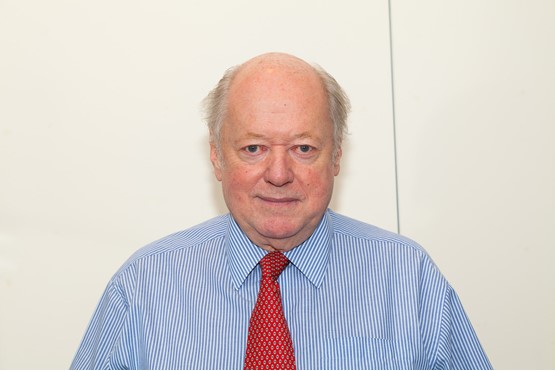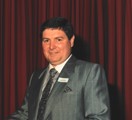We asked key fleet figures from the past 40 years to identify some significant innovations and the impact they have had on the industry. Simon Harris reports
If you are eager for more Fleet News nostalgia, why not download the digital edition of our first issue?
David Brennan, CEO, Nexus Vehicle Rental

The past four decades have seen shifts towards environmentally-friendly solutions, the decline of diesel and taxation shifting the entire proposition of the company car.
Despite rental being established as a viable commercial option several decades ago, we have seen economic uncertainty and changing environmental guidelines take the proposition to new heights in recent years, as appetite for weighty capital investment has waned and commitment to long-term vehicles becomes less attractive.
Consumer behaviour has also changed. We have progressed from ownership to ‘usership’ as customers want the right solution to their immediate situation through Mobility as a Service.
Ultimately, however, it will be technology that we look back on and remember the past 40 years for.
Despite the industry proving receptive to technology over recent decades, as the market continues to evolve at an unprecedented pace, businesses of all sizes must decide whether to stick or twist; invest in tech or risk being left behind.
Gerry Keaney, chief executive, BVRLA

Innovations in vehicle technology have changed the core of our product, with cars, vans and trucks now being intelligent feats of ingenious software and mechanical engineering. For me though, the greatest driver of change has been brought about by wider technological advancements in IT.
The way we run and operate our businesses as well as the way we engage with customers has completely changed.
Our industry has led the way in adapting to this ever-changing technological landscape.
The fleet sector has consolidated throughout the past 40 years, but not to the extent that we might think.
The fact that we still have the FN50 shows how vibrant the sector is.
Some other European countries may struggle to even find 50 companies in operation, whereas in the UK, our sector is buoyant and still growing, with different business models emerging as operators in the mobility space.
The fleet sector has shown great resilience during the past 40 years.
Despite the challenges, our industry has always been good at investing in, recruiting and retaining the best skills in the marketplace and this is probably why the UK’s vehicle rental and leasing industry is globally best-in-class.
That would have been the ambition of the industry’s leaders in the 1970s in the same way as it is today. The same goes for the BVRLA. Years ago, while in my third year at ‘poly’, I was spending weekends and holidays fitting tyres at Watford Gap Services, and I was actually quite good at it.
Our day-to-day work was driven by hard graft and warm customer greetings and it is this customer-focused approach that has remained steadfast and unchanged across the entire automotive industry during the past 40 years.
Martin Ward, manufacturer relationship manager, Cap HPI

At the time Fleet News was launched, I had been selling cars for seven years and getting quite good at it.
I was selling Hondas at Hepworth of Kirkburton, a small village dealer. Our idea of a fleet sale was selling an Acty pick-up to the local milkman, or a really big fleet sale was delivering two Civics to Bamforths Postcards, to be run by Mr and Mrs Bamforth in Holmfirth, and, no doubt, being paid in cash.
After the three Honda years, I moved to a larger Austin Rover MG Jaguar and LDV dealer called Rocar in Huddersfield.
Fleet business was brisk there, with most being paid for by company cheque, and very little finance – this was Yorkshire after all ...
Fleet accounted for nearly 25% of sales, as the majority were still retail cars.
In 1988 I moved to Cap in Skipton, where a team of just nine were trying to take on the world. A few ex-car salesman who thought we could value cars and push the huge, well-established other guide out of the way.
Around 1992 we came up with the idea of predicting future values. Some thought it was stupid idea,and would never catch on. Ah, well we gave it a go...
It took a couple of years for anyone to take us Yorkshire country bumpkins seriously. But eventually it worked, and I think it was at this point that the fleet industry came alive as Cap Monitor (now called Gold Book) was being used increasingly and became the industry standard.
Julie Jenner, international business manager, Arval; former ACFO chairman

The way fleet is structured has changed a great deal. There were many more of the old-style transport managers, who might normally have worked in a Portakabin where the vehicles were based and there were definitely fewer women working in the industry.
As a fleet manager, you had a great deal of autonomy, were responsible for all that was going on and needed to be an expert in all aspects of that job.
Outsourcing was nowhere near the scale it is today, and there was no support from leasing companies. If you needed advice you would have to pay a fleet consultant a day rate.
Fleets used to buy cars based on P11D value – total cost of ownership (TCO) wasn’t a widely adopted basis for vehicle procurement. Drivers were keen to hit 18,000 business miles a year so they could fall into a lower benefit-in-kind (BIK) tax threshold.
Drivers covering fewer than 2,500 miles paid 35%, those driving 2,500 to 18,000 paid 25%, and those travelling more than 18,000 miles were liable for just 15%.
From January to March, business mileage claims increased as drivers targeted the next threshold before the end of the financial year to minimise their tax.
We began a transition around 25 years ago, as there were moves to make the fleet manager’s role more professional. The ICFM introduced recognised qualifications and formalising a range of skills the job required.
Although the level of support for fleet managers has increased during the past 40 years, with key fleet account executives at the contract hire companies, and the network professional associations such as ACFO provide, I wouldn’t say the job is easier now. But the challenges are different.
Christopher Macgowan obe,former SMMT chief executive

Back then the fleet business was really all about company cars; the personal taxation regime made them hugely attractive and I remember with pride my first company cars – an Austin Maxi followed by a Hillman Hunter and then the much acclaimed Austin Princess which was thought to be a global winner.
The professionalism that has swept through the industry over the years makes those early days look almost amateurish.
When we look today at fleet management, remarketing, high levels of certainty about used car prices and the elevation of the fleet manager often, and rightly so, to board level, I have in my career witnessed the fleet industry go from a haphazard expenses-controlling exercise to a highly sophisticated asset management skill backed by professional qualifications and attracting some of the top brains.
Gordon Stephen, managing director, Ogilvie Fleet

Technology is the single biggest and most significant change. There was no email so monthly lease rate quotes were posted to customers; there was no internet so customers had hardcopy versions of rate books that were regularly updated – today individuals can log in online and build their car according to employer company car policy.
Lease quotes were ‘back of a fag packet’ calculations. We had a manufacturer’s car list price and Cap ‘Black Book’ helped with the residual value setting, but there was a lot of ‘guesstimating’ in working out the monthly lease rate because there was nowhere near the volume of data that’s available today. Everything was very rudimentary.
Leasing companies only offered full contract hire with maintenance and customers were offered roadside assistance and a replacement car in case of breakdown. There were no other funding option or services, such as accident management or daily rental, available.
Nigel Fletcher, chief operating officer, Alphabet

Vehicle technology has advanced at a huge pace in the past 40 years, but every time we move forward as an industry, driver and customer expectation moves at a similar pace.
Changes come with consequences. Fixing a problem with a vehicle is very different from 40 years ago, but the expectation by customers of immediate results hasn’t taken account of the complexities of modern vehicles and the technology within them.
Drivers’ lives are motivated by productivity and return on capital. They are measured by what they bring to a business.
They are now expected to communicate in more hours of the day than they are contracted to and, in turn, they expect all their service providers to make similar commitments.
We need to focus more on managing expectations. As an industry we haven’t been brave enough to give ourselves sufficient time to resolve problems.
With the introduction of mobile speed cameras, traffic light cameras, bus lane cameras and automatic number plate recognition, we spend too much time trying to establish whether a driver was in the vehicle in that place at that time.
Mobile technicians while you work have replaced time-consuming visits to glass or tyre centres.
We still have some dangerous behaviour on the roads, whether it’s people overloading vehicles, speeding, drink-driving or using their phones while driving.
I think there is more to come under corporate manslaughter legislation. It took eight years for the first case to come to court, but there will be more.
Ian Hill, managing director, Activa Contracts

The fleet industry today is far more sophisticated and the level of service is incredible.
In the early days, and for many years after, we were dealing with fleet managers who were knowledgeable about vehicles. They decided the cars and vans they wanted and, as a leasing company, we delivered them.
Today, we rarely deal with a fleet manager. Instead the person administering a fleet has a finance, HR, procurement or facilities role and typically has limited vehicle and fleet knowledge.
As a result, the knowledge base has transferred to the leasing industry, which now helps clients to decide which vehicles to run and how to manage them to achieve compliance with best-practice – a fundamental change.
Nick Brownrigg, CEO, Alphabet

The industry has unquestionably become more professional. Not simply through increased legislation and regulation, but also through the work of bodies like the BVRLA, ACFO and ICFM in raising standards.
The fundamentals of leasing haven’t changed. It’s still a case of providing the right vehicle, in the right place, at the right price to make it accessible to customers.
But it needs to be delivered with an appropriate level of service, which is valued by customers, without charging them a premium for it.
The relationship between the corporate, the user and the asset is changing. People are starting to think more along the lines of matching the vehicle or mode of transport to the journey, not simply a ‘one size fits all’.
Outright purchase used to be the norm, but leasing and rental are now standard. Corporates moved from an ‘ownership’ model in the past to the ‘usership’ of leasing in the 1990s.
The next move will be into sharing and we’re already seeing that with our own AlphaCity and other subscription-based services.
As a company car driver, your choice used to the guided by the look of the car, performance and price. Now, the first things a company car driver has in mind are CO2 emissions, fuel consumption and Vehicle Excise Duty.
Alongside developments in engine technology, over the past 20 years, changes in BIK tax have seen CO2 emissions reduce by a third. Now BIK provides businesses and company car drivers with a lack of clarity on future choice considerations.
We need certainty for longer-term tax planning, with a joined-up approach to electrification and investment in road infrastructure that’s arguably in a worse state than at any time in the past 40 years.
































Login to comment
Comments
No comments have been made yet.